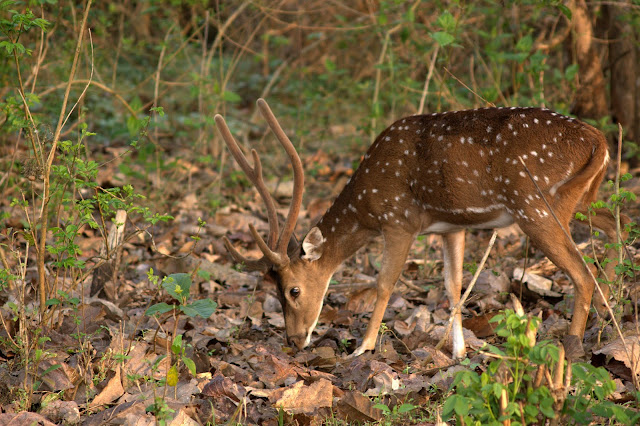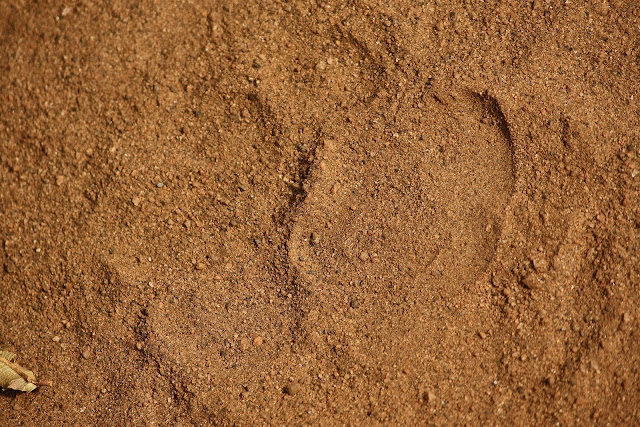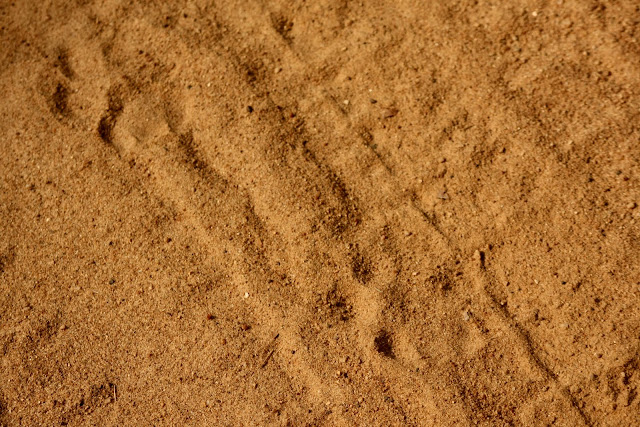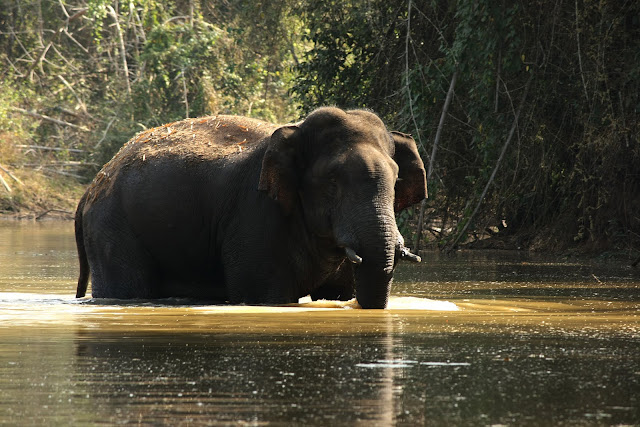The Tiger (Panthera Tigris) is one of the most endangered species in the world today as everyone knows. And it is one of the things that are making news nowadays when it comes to wildlife. Destruction of the habitats and poaching for fur of the Tigers has left approximately 2000 Tigers in the world as per the recent survey as opposed to an estimation of over 100,000 of tigers at the start of 20th century. India is home to the world’s largest population of tigers in the wild. Project Tiger started way back in 1973 led by Indira Gandhi, was a major initiative towards conservation efforts. The program received accolades when the Bengal Tigers population was tripled from 1200 in 1973 to over 3500 in the 1990s. However a tiger census carried out in 2007 (report published on Feb 12, 2008) startled the nature lovers which stated the Tiger population in India has declined by 60% approximately 1411, the number which you have been hearing from famous Sportsmen and Actors on TV channels everyday now. Also, the number might be lesser than 1411 by now.
 |
| 1. On the verge of extinction; This shot was taken at Pilikula park, Mangalore; |
The Forest Department under the supervision of the Wildlife Institute of India (WII), the Central Government and Office of the Field Director of Project Tiger will carry out the Tiger Census in 2009/2010, in various states in India. Hopefully the results are announced soon about the population of Tigers as of now. With this background I will share my experience of Tiger Census conducted between Jan 22 and Jan 27th of 2010. I received a call from Hunsur Forest Division, to be a volunteer to help the officials to conduct Tiger Census for the second session starting from 25th Jan till 27th Jan 2010. Instantly I accepted the offer and planned my vacation.
*Note about the census conducted:
There is no guaranteed intervals or frequency at which Tiger (or any census) is conducted in the forests; The census usually will be done in all the forests throughout India; you will get such information through news paper or some online forums; you need to fill up an application form from Forest Office Division, fill it up and send it to the respective division to show your interest in volunteering. The govt officials will call you up and inform about your selection.
With so much of excitement, a little bit of fear whilst determination to sight a Tiger and capture that moment in my camera, I reached the check post of Veerana Hosa Halli range which is the starting point of Rajiv Gandhi National Park. After signing the bond paper few of the volunteers including me were taken to an Anti-Poaching camp inside the forest where we were supposed to spend our next 3 days and nights. I have always seen the jungle either through a safari which covers only a narrow part of the jungle or driving through the tar roads carved inside the national forests. This time, it was different. I was taken deep inside the jungle where anti-poaching camps are situated and where life can take any turn any moment. The excitement on the faces of all the volunteers was so evident! Few said "sigh, I can be away from all the tensions for 3 days" and few others cribbed "God, how am I going to spend 3 days!!"
As the jeep took the deviation from the main road and entered the jungle the excitement doubled and the eyes were searching for the wildlife as though all the animals will be waiting to welcome us (high hopes!!). We drove inside for a few KMs till we reached an anti-poaching camp. All I can say about the camp is that, it was a 4 walled construction which had an entrance but no door, and there was a trench surrounding the camp which could have been crossed only by elephants. A guard and two watchers are the residents of the camp. These people are responsible to guard certain amount of forest area that they are assigned with.
The entire forest in this region is divided into several ranges and each range is divided into Compartments (CPT). In each CPT, there was a straight line of 2 kms cut into the forest (basically a narrow path was created) where were supposed to walk in a group which included 2 volunteers, a guide, and a Guard. Census on 2 kms stretch was conducted on first and 3rd day which involved census on habitat, prey density, herbivore and carnivore count and the vulnerable areas. The second day involved a longer coverage of about 5 to 7 KM specifically for Tiger Census. The census happened from 6 AM in the morning for about 4 to 5 hours every day. The camera trapping method was used 2 weeks before the census. This method entailed transmitting infrared beam at the ground level and the instruments kept perpendicular to the tracks commonly used by Tigers. The invisible IR beam would break and in turn trigger the camouflaged cameras which would take close up pictures of the animal.
The 3 days spent in the forest came as the gifted days when I needed a break the most. Away from the traffic jams and monotonous work; away from the pollution; fresh air all 3 days; birds chirping round the clock, Nilgiris Langurs making noise and jumping from branch to branch; jungle Mynas always flying as a couple; lot of parakeets flying high over the trees; those jeep tracks and our search for pug marks; distant lake and a shelter on the tree branch on which we waited for hours to get the glimpse of an animal; a sighting of a Leopard at a distance of just 50 meters and in all the excitement forgetting to release the shutter at the right moment; Finding a herd of 15-20 elephants right in front of the eyes and running back in fear to climb a tree to escape; climbing the tamarind tree and spending hours together just to kill the time; asking the watcher to prepare tea several times a day; camp fire in the evenings; etc etc; So many things; small things but always pleasure enjoying these moments.
After 5 hours of search on the 3rd day too, I could not sight a Tiger other than hearing its roar and seeing its pugmarks which was such a disappointment for me when all other volunteers who stayed with me had spotted at least one Tiger. I pray and hope that the Tigers’ population is maintained and probably increased in coming years. I just hope next time around when I do census, I sight several of these striped beauties and get a chance to capture them in my camera. I had a terrific 3 days in NagarahoLe national park which will be remembered for a longer time. I am waiting for another such journey because the zeal to participate in such events will never die in me!
Update 28th March 2011:
Just heard the news that tiger population is increased by 15%; what a good news!!
PHOTOS
|
| 1. Bisons crossing the road early in the morning; there will be more movement of wildlife early in the morning, and hence every day we used to start by 6 AM. |
|
| 2. The Census included collecting data about vegetation in around 15 meters radius at every 400 meters for a stretch of 2 KM. The data includes the types of vegetation and density of each of the types in the given area. |
|
| 3. While observing vegetation, the density of different types of leaves fallen off, and the affected leaves was also noted. |
|
| 4. Dried up land and the left over pugmarks of a Bison; Very old pugmarks are not counted during herbivores census |
|
| 5. Prey density is an important data to understand the Tiger population in an area. The lesser prey density alerts the officials of Tigers’ starvation and hence the deaths. |
.
|
| 6. Pugmark of a Tiger on a jeep track inside the jungle printed just after our jeep has crossed this road a while before that. I missed to sight a Tiger by few minutes, in two incidents; once when there was a fresh dropping of the Tiger in the CPT where we conducted census; second one here on the jeep track. |
|
| 7. When we were getting back from the census and walking towards the camp, we saw Pugmarks of a Leopard. After walking few steps on the same track we were stunned to see a Leopard marking its way down in the same direction. By the time I realized I had a camera and released the shutter, the Leopard fled the place and disappeared; disappointment for my camera but a sense of satisfaction to me that I sighted a Leopard on day 1. |
|
| The Anti-Poaching camp in Veerana Hosa halli range; They seem to guard the forest 24x7 without door, and with minimal facilities available. |
|
| 8. The 2nd day too didn’t yield a Tiger sighting but full of pugmarks and rakes on the trees. I heard the roar too but couldn’t follow it. |
|
| 9. Very old pug marks, as old as 3 months near the dried up lakes or water holes. |
|
| 10. We found a herd or elephants right in front; they were all heading to this lake and hence we ran back, climbed a tree and waited for the elephants |
|
| 11. Census included recording the data about how many trees are cut, how much of a tree is cut and natural damages around. This would provide an idea if there is a poaching in the region. The dried up leaves and fallen off trees are more vulnerable to take up fire. Last year around the same time, half of Veerana Hosa Halli forest was abolished because of the forest fire it seems; another reason for destruction of habitats of Tigers. |
|
| 12. Umesh, our Guard, a brave officer who shot a poacher at his leg when a gang of 6 people were caught stealing the precious wood from the forest. Incident took place while the Census was on, two days before I reached. It is a message to the people complaining that our officials are not doing anything to save wildlife that there are few like Umesh who care for wildlife. |
|
| 13. Elephants in the jungle are more threatening to the guards and watchers than Carnivores. There have been many instances where the elephants have charged down and chased these folks for several KMs. |
|
| 14. A painting of a tiger from Chitrakala Parishat; I hope that the Tigers don’t remain just in photographs or paintings such as this one. |
|
| 15. Will always remember this troop for giving such a wonderful experience of the jungle! |

.CR2.jpg)












Awesome blog and nice photos. I would like to join you next time for tiger census. :)
ReplyDeletesuper write up Prashant :-)
ReplyDeletepics are mast
superb kulli, good article, i think you are becoming photographer n writer.
ReplyDeletePrashanth, very nice post I must say with great photographs :)
ReplyDeleteVery nicely done.
Thanks all @Kishore, @Amit, @Sushil
ReplyDelete@Prathima, sure I will let you know :) It will be great fun :)
awesome prashant!! very good write up. in fact the last weekend i'd been to bandipur forest hoping to catch some tigers. sadly couldn't spot any. but do let me know if you're planning on a trip into the forest or about any voluntary activities such as this. i'd love to join.
ReplyDeleteI'm planning to visit rathambore reserve forest sometime next year though.if possible we can plan for a visit there.
and congrats on your sighting.awesome pics! :)
Setu
@Prashant really nice write up and great pics too :) .. Would like to accompany for next trips like this :)
ReplyDelete@Setu, Thanks buddy.. I wish you sight a tiger during "our" next visit.. Sure I am game for Ranthambore, has been in list for quite some time. Let me know your plans. Always a pleasure to travel and shoot with you :)
ReplyDelete@Priyanka, thanks for dropping by :) Sure, will let you know; it will be a pleasure traveling with fellow photographers and travel freaks :)
sooper da.. you had lot of teas there as well :P.
ReplyDeleteGreat flow and awesome photos as always.
bravo!!!!!!!! All pics are really good,i want to join you for your next forest journey.
ReplyDeletewonderful dude .. :)
ReplyDelete